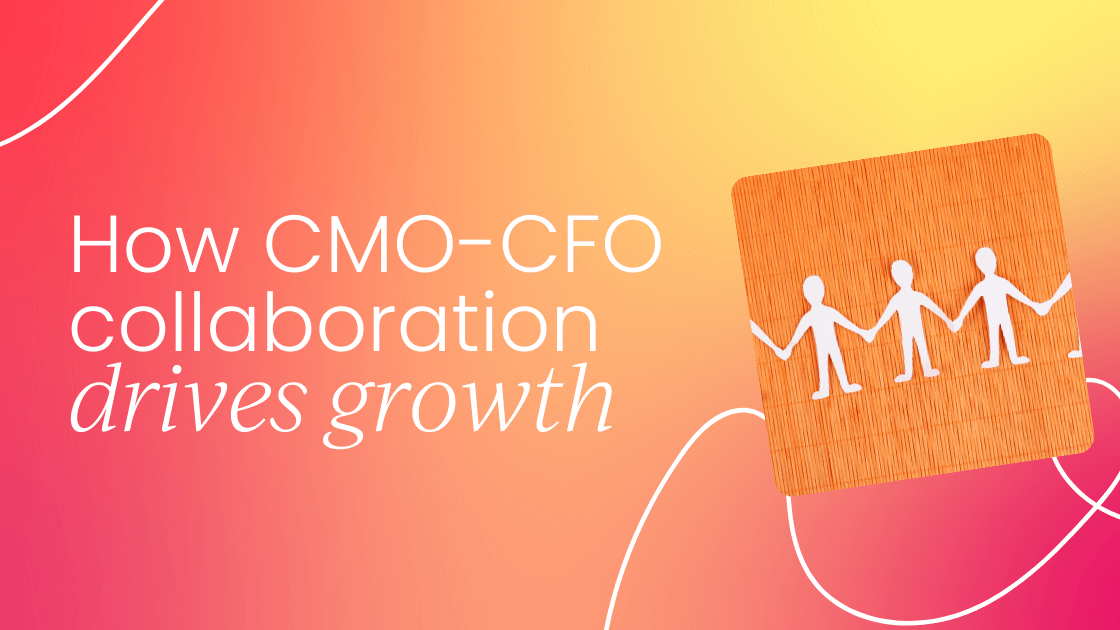For high-performing marketing leaders, hitting growth targets and running successful campaigns is often not enough to secure a seat in the C-suite.
The leap from VP or Director to CMO requires enterprise influence, strategic vision, and leadership that transcends marketing metrics.
This article explores the advanced skills you need to develop, with practical insights and exercises tailored for senior marketing leaders.
1. Enterprise-level strategic thinking
Moving from marketing leader to CMO, you must start seeing the business as a whole and influencing it accordingly. Many high-performing marketing directors excel in their teams, but fail to demonstrate how marketing decisions drive enterprise outcomes.
A VP of Marketing might obsess over conversion rates, engagement, or campaign ROI. A CMO must translate those metrics into boardroom language: revenue impact, customer lifetime value, market positioning, and competitive advantage.
For example, instead of presenting a campaign report showing 20% engagement growth, frame it as:
"This campaign is projected to increase customer retention by 5%, translating to $3M incremental revenue over the next 12 months and strengthening our position in a key market segment."
Here are some practical exercises to start to nurture this skill in enterprise thinking:
- Strategic mapping: Pick one upcoming initiative and map its impact across all functions (operations, product, finance, customer success), not just marketing.
- Cross-functional shadowing: Spend a day with a finance or product leader each quarter to understand their priorities and pain points.
- Scenario planning: Model multiple business outcomes based on marketing decisions. Ask yourself: If this campaign fails, what are the enterprise implications? If it exceeds expectations, what strategic opportunities open up?
CEOs notice leaders who think in enterprise terms. In a McKinsey study of top-performing CMOs, only half of the surveyed believe that marketing executives are involved in the strategic-planning process.
McKinsey stated, “This limits CMOs’ impact on broader business goals and obfuscates the connection between marketing activities and company objectives.”
2. Financial fluency and business acumen
One of the fastest ways to gain (or lose!) credibility in the C-suite is how you talk numbers.
You don't need to be a CFO, but you do need to tie marketing investments directly to P&L outcomes, run scenario planning that demonstrates trade-offs, and practice financial storytelling that translates complex ROI models into simple cause-and-effect narratives.
Start by showing how marketing programs drive tangible business results.
Here’s an example:
When pitching a new marketing technology platform, a VP may highlight adoption rates and user engagement. A CMO frames it as: “This investment is expected to reduce churn by 4%, generate $2.5M additional revenue next year, and free up $500K in operational costs through automation.”
When proposing budget shifts from brand to demand generation, quantify the EBITDA implications. This is the language executives understand.
A framework that you can use to help you with this is the ROI triad (Investment, Impact, and Outcome). Here, you break down marketing initiatives with:
- Investment: Budget required and resource allocation
- Impact: Revenue growth, retention, or brand value gains
- Outcome: Measurable contribution to overall company metrics (EBITDA, net margin, market share)
To build this financial fluency, you can:
- Model multiple scenarios before recommending major spending decisions.
- Present trade-offs in executive-friendly language that focuses on business outcomes, not marketing jargon.
- Partner with finance on quarterly P&L reviews – this collaboration builds both credibility and commercial acumen.

3. Influence without authority
Your ability to influence peers across functions is one of the clearest markers of C-suite readiness. Marketing leaders rarely "own" sales, product, or service, but success depends on alignment with all three.
Effective influence starts with stakeholder mapping: identify champions and skeptics before launching major initiatives. Recognize that influence styles vary; some leaders respond to data, others to narrative, and still others to external benchmarks.
Adapt accordingly. Often, the most powerful role a CMO can play is as a neutral facilitator, serving as the bridge-builder between siloed functions.
Before presenting any initiative to the C-suite, pressure-test it against three questions:
- What problem does this solve for the business, not just marketing?
- What trade-offs will this require of other functions?
- How does this align with the CEO’s top three priorities?
If you can't answer these clearly, you're not ready to present.
Here’s a framework you can use to ensure you master the five influence levers that move executives:
- Data and evidence: Numbers matter to rational decision-makers
- Storytelling: Narratives connect with emotional drivers
- Peer champions: Allies amplify your message
- Reciprocity: Offer support to others before asking
- Visibility: Share progress and wins in executive channels
In practice, this means identifying the top three stakeholders for each cross-functional initiative and tailoring your approach to their priorities. Sales cares about pipeline. Product cares about adoption. The CFO cares about ROI. Use quick wins to build credibility before tackling bigger alignment challenges.
4. Change and transformation leadership
Marketing leaders often underestimate how much of their job at the top involves guiding the company through disruption.
At the C-suite level, you must lead through ambiguity, setting clear direction even when data is incomplete. You must build resilience in your teams by practicing failure post-mortems that celebrate learning, not just outcomes.
And you must master change storytelling, framing transformations not as threats like "digital overhaul," but as opportunities for modernization and growth.
Consider an initiative that has stalled due to organizational resistance. What could you do differently to communicate vision more clearly, equip teams with the skills and resources to succeed, and celebrate early wins to maintain momentum?
These aren't rhetorical questions but diagnostic tools for building your change leadership capability.
The 4C Change Model provides a practical structure:
- Clarity to define vision and objectives,
- Communication to keep teams informed and engaged,
- Capability to equip people with the skills and resources they need, and
- Celebration to recognize small wins that sustain momentum.
And don’t forget that these elements work in concert, not in isolation.
Make sure to develop this skill systematically. For example, take ownership of small transformation projects before leading enterprise-wide initiatives, document lessons learned to demonstrate your ability to iterate and scale change, or build internal case studies that showcase measurable impact.
These experiences become your credibility currency when larger transformation opportunities arise.
5. Talent magnetism and culture shaping
The strongest CMOs develop leaders and shape culture. In the C-suite, your influence is measured by the leaders you leave behind.
Consider the CMO who mentors high-potential talent across the organization, sponsoring them for visibility in cross-functional projects. When that CMO moves on, the team continues to deliver impact. This is leadership that scales.

To achieve this, shift from being the smartest person in the room to building the smartest team in the company. Create a risk-tolerant culture that encourages test-and-learn mindsets through small-scale experiments.
And actively sponsor talent, push your high-potential leaders into cross-functional projects that raise their profile beyond marketing.
The 3-T Talent Approach provides a roadmap:
- Identify high-potential leaders early,
- Develop them through coaching and high-impact stretch assignments, and
- Advocate for them by creating cross-functional visibility opportunities.
This systematic approach ensures talent development becomes embedded in how you lead, not an afterthought.
It’s also important to make this tangible through regular practice in your current role. You can do this by:
- Holding quarterly one-on-ones with rising stars to discuss career goals, not just project updates.
- Encouraging calculated risk-taking and documenting learning outcomes to normalize experimentation.
- Celebrating diverse perspectives and successes publicly to reinforce the culture you're building.
C-suite readiness checklist (for VPs/Directors)
✅ Can you explain marketing ROI in CFO/CEO language?
✅ Have you led at least one cross-functional strategic initiative?
✅ Can you influence peers without direct authority?
✅ Have you participated in transformation or change leadership projects?
✅ Are you actively mentoring high-potential talent?
✅ Can you communicate how marketing drives enterprise growth, not just campaigns?
Final thoughts
To move from marketing leader to enterprise leader, you must broaden your scope. Your journey to the C-suite won’t be defined by the brilliance of your campaigns, but by your ability to:
- Frame marketing as enterprise strategy.
- Speak fluently in financial terms.
- Influence peers without authority.
- Lead transformation with conviction.
- Build a culture that scales.
If you’re serious about how to reach the C-suite, start now. These are not skills you pick up after the promotion. They’re the very capabilities that get you there.
FAQ: Leadership skills for entering the C-suite
What leadership skills are needed to become a CMO?
Beyond marketing expertise, aspiring CMOs need enterprise-level strategic thinking, financial fluency, influence without authority, transformation leadership, and talent development skills. These skills demonstrate readiness to contribute to the company’s overall strategy, not just marketing outcomes.
How can marketing leaders develop leadership skills for the C-suite?
Focus on areas that expand your scope beyond your function: participate in cross-functional projects, take executive finance or strategy courses, practice influencing peers, and lead transformation initiatives. Mentorship from current CMOs or board members can also accelerate growth.
What is the difference between marketing leadership skills and general leadership skills?
Marketing leadership skills often emphasize brand strategy, customer insight, and campaign execution. General leadership skills, by contrast, include enterprise strategy, financial literacy, change management, and cross-functional influence – all essential for C-suite roles.
How do leadership and development skills impact career progression?
High-level leadership and development skills signal to the board and CEO that you can grow beyond your current role. Executives who demonstrate the ability to develop talent, drive cross-functional alignment, and influence enterprise strategy are more likely to be considered for the C-suite.
How can VPs or Directors of Marketing prepare for executive leadership roles?
Start by broadening your perspective beyond marketing. Lead initiatives that impact multiple functions, articulate marketing ROI in business terms, cultivate high-potential leaders, and practice influencing peers without direct authority. This positions you as an enterprise-ready leader.
How do leadership skills in marketing translate to the boardroom?
Marketing leadership skills, such as customer insight and data-driven decision-making, gain credibility at the board level when paired with financial acumen, enterprise vision, and transformation leadership. Together, these skills show you can align marketing with overall business strategy.
How can I demonstrate readiness for the C-suite as a VP of Marketing?
Document outcomes that show enterprise impact, not just marketing metrics. Lead cross-functional projects, communicate marketing’s role in driving revenue and growth, and actively mentor future leaders. Your track record of influence, vision, and results will make the case for C-suite readiness.






.png)









 Follow us on LinkedIn
Follow us on LinkedIn






